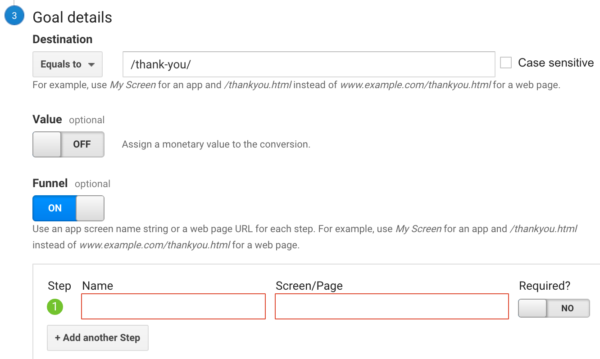Discover the Limitations of Google Analytics Goals: Revealing the Information Types That Remain Untrackable
As organizations progressively count on data-driven decision-making, recognizing the limitations of tools like Google Analytics becomes vital. While Google Analytics Goals offer valuable understandings right into individual communications, there exist data kinds that avoid tracking, posing difficulties to a comprehensive understanding of customer behavior.
Insufficient User Journey Tracking
Insufficient customer journey tracking within Google Analytics can hinder the capacity to precisely analyze user habits. When the individual journey is not totally tracked, there are spaces in the data that stop a detailed understanding of exactly how users engage with a website. This absence of understanding can lead to missed out on possibilities for optimization and enhancements to the individual experience.
One typical issue with insufficient customer trip monitoring is the failure to see the complete course that individuals take previously completing an objective or leaving the website. Without this details, it is testing to identify where individuals may be encountering obstacles or friction factors that avoid them from converting. Furthermore, incomplete monitoring can cover the effect of certain marketing initiatives or website modifications on individual habits.
To address this restriction, it is critical to establish appropriate tracking systems within Google Analytics to record the entire user trip. This may involve setting up occasion monitoring, goal funnels, or using devices like Google Tag Manager to make certain that no vital interactions go unrecorded. By acquiring an extensive sight of the customer trip, website owners can make more enlightened choices to enhance individual engagement and drive conversions.
Attribution Obstacles
Navigating through attribution obstacles in Google Analytics needs a complete understanding of just how different touchpoints contribute to the total conversion process. Acknowledgment difficulties emerge from the complexity of modern-day consumer journeys, where customers engage with multiple channels prior to transforming.
One typical attribution obstacle is the trouble in associating conversions to the proper resource, especially in situations where individuals connect with multiple networks before transforming. Furthermore, cross-device tracking presents another attribution challenge, as users often switch over between devices during their trip, making it testing to track their interactions effortlessly.
Offline Conversions
Provided the difficulties connected with associating conversions precisely in online channels, the dimension of offline conversions offers a significant opportunity for marketing professionals looking for a much more detailed understanding of their consumers' journey. Offline conversions describe activities that consumers absorb the real world, such as making purchases in brick-and-mortar shops or over the phone, going to events, or engaging with printed materials - what data is google analytics goals unable to track. These conversions are important for businesses that run both online and offline, as they give important insights right into the effectiveness of advertising projects throughout different touchpoints
Tracking offline conversions generally positioned a substantial difficulty for marketing experts, as it was challenging to connect these activities back to particular on the internet interactions properly. Nevertheless, with advancements in innovation, such as the combination of CRM systems, special identifiers, and promo code codes, Homepage services can currently link the space in between online and offline data to get a much more all natural sight of customer behavior. By properly determining offline conversions, marketing professionals can maximize their strategies, assign sources more effectively, and ultimately enhance the general consumer experience.
Cross-Device Monitoring
Cross-device monitoring plays a vital role in comprehending the interconnected nature of customers' digital interactions across multiple devices. In today's omnichannel world, where customers perfectly switch between tablet browse around this web-site computers, smart devices, and desktops, tracking their actions across these gadgets is essential for marketing professionals to obtain a thorough view of their consumer journey.

In addition, privacy worries and laws such as GDPR and CCPA have further difficult cross-device tracking. With individuals requiring even more control over their information and increased limitations on tracking technologies, marketers need to discover privacy-compliant and innovative methods to attach individual communications throughout tools.
Dynamic Material Engagement
Understanding individual involvement with vibrant content is crucial in optimizing electronic marketing techniques for enhanced audience interaction. Dynamic content refers to website elements that change based upon customer habits, choices, or other variables, offering a customized experience. Tracking customer communications with vibrant material postures obstacles for conventional analytics tools like Google Analytics.
While Google Analytics can track standard interactions like clicks and page sights, it might struggle to capture more nuanced engagements within vibrant material. what data is google analytics goals unable to track. Metrics such as time invested on specific dynamic aspects, float actions, or communications within pop-ups are usually not quickly quantifiable making use of typical tracking methods. This restriction impedes online marketers' ability to fully comprehend how users are engaging with dynamic web content and tailor their approaches accordingly

Conclusion
In final thought, Google Analytics objectives have restrictions in tracking insufficient user trips, associating conversions accurately, capturing offline conversions, tracking cross-device interactions, and measuring vibrant web content involvement. These restrictions highlight the importance of checking out additional monitoring approaches and tools to gain an extra comprehensive understanding of individual habits and conversions past what Google Analytics can give.
While Google Analytics Goals deal valuable understandings into customer communications, there exist information kinds that elude tracking, posturing difficulties to an extensive understanding of user actions.Incomplete customer journey tracking within Google Analytics can hinder the capacity to accurately examine user actions. When the user journey is not fully tracked, there are gaps in the information that stop a comprehensive understanding of just how individuals connect with a website.One usual concern with incomplete customer trip tracking is the failure to see the full course that individuals take previously completing a goal or leaving the website. By obtaining a thorough view of the user journey, website proprietors can make more educated decisions to improve user engagement and drive conversions.
Comments on “What Data Is Google Analytics Goals Unable to Track: A Complete Guide”